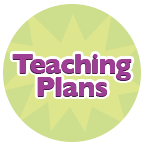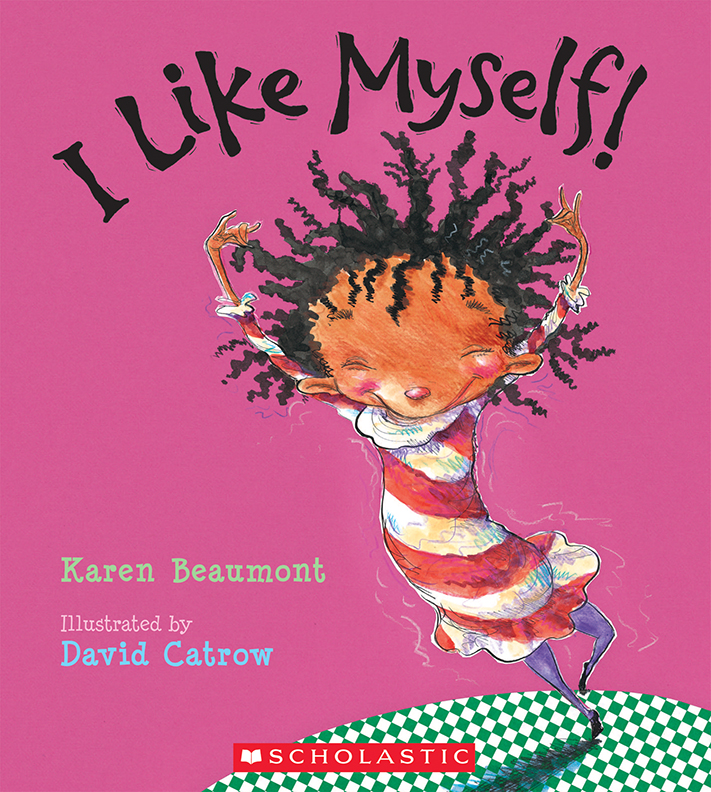Written by Karen Beaumont
Illustrated by David Catrow
Text Type: Fiction: Description—Rhyming Account
Summary: A humorous rhyming account of a girl who, no matter what she does, or what others think of her, likes herself because, as she says, “I’m ME!”
Text Features
• punctuation: exclamation marks
Visual Literacy
• humorous illustrations
Strategy Teaching
• integrated throughout the lesson
• prompts focus on a range of strategies (Analyzing, Sequencing, Making
Connections, Predicting, Inferring, Synthesizing, Evaluating, Self–Monitoring)
• the comprehension purpose for listening highlights Analyzing/Inferring/Synthesizing
Time: approximately 25–30 minutes
Assessment Opportunities
Note each student’s ability to
• attend to story reading
• participate in partner and whole–class discussions
• understand the inquiry question
BEFORE READING
Establishing the Inquiry Focus- Explain that you will read the students a book telling how a little girl feels about herself and why she feels that way.
-
What do we see on the front and back covers? What do you think when you see this little girl? Do you think she is happy? Why?
Show students the front cover of I Like Myself! and read the title and the names of the author and illustrator.
What is it that you like about yourself? What is something special about you or what you like to do?
Activating and Building Background Knowledge- Ask students how they feel about themselves and what they like to do.
- Ask students to turn and tell a partner what they like about themselves, what they feel is special, or something they like to do. [Making connections]
-
What does she look like? Is this like or different from you? Why do you think that?
Ask students about the title of the text and the picture on the cover to discuss how they might be the same or different from this little girl. [Making connections] -
Why do you think the little girl says, “I Like Myself!”? What do you think she likes about herself.
Ask students to predict why they think she likes herself. [Predicting]
- Point to the exclamation mark and ask students if they know what this punctuation mark is. Discuss that when we see one of these exclamation marks we add excitement in our voice as we read. Model how to read the title if it were a period or an exclamation mark. Have students practise saying the title with expression. [Print concepts]
-
As we read and look at the illustrations, find different ways the girl says she likes herself.
Ask students to listen for what the girl says about why she likes herself. [Analyzing/inferring/synthesizing]
DURING READING
- This book has such interesting illustrations that you will want to pause frequently (every page) to discuss the text and illustrations with the students. Vary between asking students to discuss as a whole group and with partners.
- Prompts for discussion could include:
- What does the girl show she can do from the pictures? [Analyzing/inferring]
- How does she compare herself to others? [Inferring]
- What does she say she likes about herself? [Analyzing]
- How does the illustration show ‘I like me wild?’ [Inferring/synthesizing]
- Who is she being compared to when you read and see ‘I like me wild’? [Making connections: comparing]
- When she says: ‘I like me fast. I like me slow.’ how do the illustrations help us with the text? [Analyzing/inferring]
- How does she react to how others might think about her? [Analyzing]
- What would happen if she had fleas or warts or a silly snout? [Analyzing]
- How do the illustrations help us picture the girl and what she says? [Synthesizing]
- What do you think her companion, the dog, is thinking in each picture? [Inferring/ predicting/evaluating]
- Why does she say she likes herself? [Analyzing]
So why do you think she likes herself?
AFTER READING
Tell your partner one thing you think she liked about herself. Why does she like herself?
- Invite students to work with a partner to review what the girl liked about herself. [Analyzing]
-
What do you think is special about you? What is one thing that you think you do well? Why do you like yourself?
Have students think about themselves and one thing that they think is special about themselves.
FURTHER READINGS
- You may decide to explore some other visual resources before you reread I Like Myself! (for example, those suggested in the following section, Extending The Inquiry, or others you find).
-
How are you different/the same? Do you play the same way? Do you do the same things? Do you look the same?
When you reread I Like Myself!, emphasize visual and textual comprehension. Ask students to compare their own feelings about themselves with the little girl’s feelings about herself. [Making connections]
-
Show me how you would be ‘wild’ or ‘tame.’ What does ‘stop and stare’ mean? Show me. What would this look like?
During a rereading of the text, discuss comprehension of vocabulary concepts, e.g., ‘I like me wild,’ ‘I like me tame,’ ‘I like me on the inside,’ ‘I may be called a silly nut, or crazy cuckoo bird,’ ‘stop and stare,’ ‘fleas or warts,’ ‘silly snouts,’ ‘knobby knees,’ ‘hippo hips,’ ‘hair that’s like a porcupine,’ ‘beaver breath,’ or ‘horns protruding from my nose.’
- Discuss how the girl and the dog may or may not think the same. How do you know? [Analyzing/visual literacy]
EXTENDING THE INQUIRY
Young students explore in multiple ways. Consider using some of the following suggestions to extend the inquiry.
- Show students a video clip such as:
Sesame Street – Ernie & Bert: Ernie’s special
1 min 50 sec – 18 Sep 2007 – Uploaded by jonnytbirdzback
youtube.com (Ernie doesn’t think he is special but Bert convinces him otherwise)
- Download some songs or poems to teach to the students about being special. For example
- CanTeach (I Am Special/About Me songs and poems)
- CanTeach (I Am Special/About Me songs and poems)
- Read other books about being special to your students and place them in the reading centre so that students can look through them individually or with a partner. Encourage students to talk about their learning and to ask questions. Suggestions include:
- Duckie Duck by Kate Toms: Berkhamsted: Make Believe Ideas, 2008 (Fiction: tells about one duck that enjoys being different)
- You Are Special, Little One by Nancy Tafuri: Scholastic Press, 2003 (Info–fiction: a variety of baby animals all ask: How am I special?)
- Jack’s Talent by Mayann Cocca–Leffler: Farrar, Straus and Giroux, 2007 (Fiction: children, on the first day of school, name something special about themselves)
- Link to other Read Aloud texts in the original Literacy Place for the Early Years that feature being special or recognizing one’s accomplishments. David’s Drawings focuses on David who loves to draw his own pictures but who is happy to let his classmates help him draw a special picture. You may wish to read this book to students if you haven’t already introduced it to them.
- Invite students to dramatize how this little girl would look or how she
would act if we showed her as she says, ‘I like me fast.’ or ‘I like me slow.’ Suggest that they walk or do the activity like the little girl in these statements. Pause to talk over the movements.How do you think the little girl would look if she did as she said, ‘I like me slow.’?
- Invite students to think of other ways the girl may have looked besides having a snout or horns. Students can discuss with a partner some of their ideas and draw one of them on the Body Outline BLM.
- Invite students to draw pictures of themselves and label them using one of the following suggestions:
- Using the Body Outline BLM, students can draw one thing that is special about themselves. Have students add labels to describe their drawing. Assist students by scribing the labels when needed, being sure to reread each label with the students.
- Students can create a finger–painting of themselves on paper and record descriptive labels.
- Students can draw something special that they like to do and add descriptive labels.

